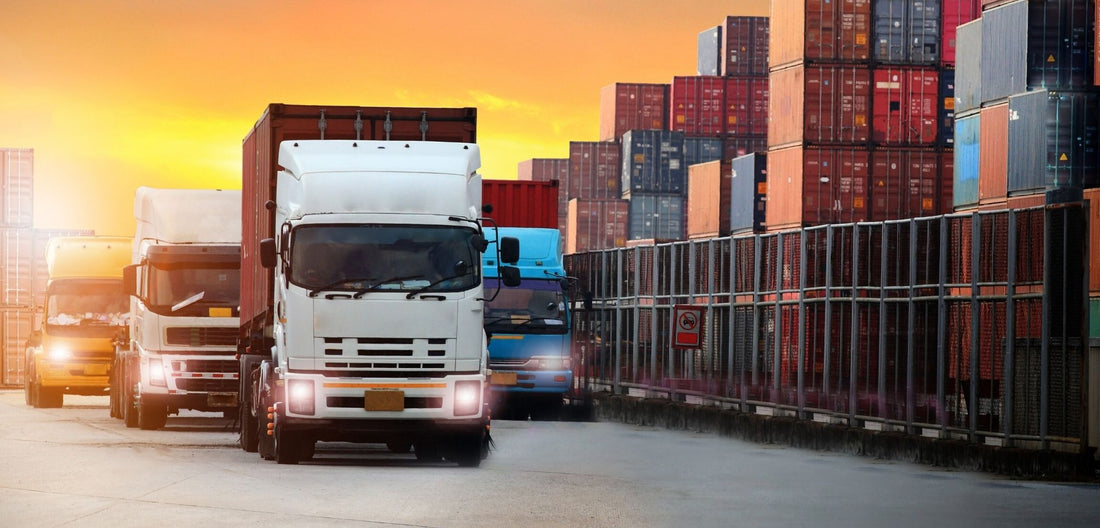
Green Gains: The Rise of Sustainability in Third-Party Logistics
Share
In an era defined by environmental consciousness, the supply chain, a traditionally carbon-intensive industry, is undergoing a profound transformation. At the heart of this shift are Third-Party Logistics (3PL) providers, who are no longer just focused on efficiency and cost. Today, sustainability is a core pillar of their operations. Driven by consumer demand, regulatory pressures, and a clear business case, 3PLs are embracing "green logistics" to create a more eco-friendly and responsible future. This movement isn't just about a change in philosophy; it's about tangible, data-driven actions that are reshaping how goods move across the globe.
Fueling a Greener Fleet
The single largest contributor to the carbon footprint of the logistics industry is transportation. Recognizing this, 3PLs are making significant investments in their fleets and operational strategies. The shift to cleaner vehicles is gaining momentum. Companies are increasingly adopting electric vehicles (EVs) and hybrid trucks for short and medium-haul deliveries. For example, some major 3PLs have set ambitious targets, with one company aiming to achieve a 50% reduction in CO2 emissions per parcel delivered by 2035. While the initial investment can be high, the long-term savings in fuel and maintenance costs make this a financially sound decision.
Beyond vehicle type, 3PLs are leveraging advanced technology to optimize their transportation networks. Route optimization software, powered by AI and machine learning, is a game-changer. These algorithms analyze real-time data on traffic, weather, and delivery schedules to create the most fuel-efficient routes, which can reduce travel distances by up to 30%. This not only cuts down on emissions but also leads to substantial cost savings. Furthermore, freight consolidation, a practice of combining multiple smaller shipments into a single, larger one, reduces the number of trips and, consequently, the overall fuel consumption.
Warehouses as Eco-Hubs
The greening of 3PLs extends far beyond the open road and into the massive, energy-intensive world of warehousing. Traditional warehouses are significant consumers of electricity, primarily for lighting, heating, and cooling. Today's sustainable warehouses are incorporating a suite of innovations to mitigate this impact.
One of the most impactful changes is the adoption of renewable energy sources. Many modern facilities are installing solar panels on their rooftops, generating a portion of their own power. This can offset a significant amount of their annual energy consumption, with some reports showing offsets of up to 75%. In addition to solar, simple yet effective changes are being implemented. LED lighting is replacing traditional bulbs, consuming up to 75% less energy. Furthermore, motion sensors and automated systems ensure that lights and climate control are only active when and where they're needed, eliminating wasted energy.
Beyond energy, 3PLs are focusing on waste reduction and management. This includes comprehensive recycling programs for everything from cardboard to plastic wrap. By optimizing warehouse layouts and inventory management systems, companies can reduce unnecessary movements of equipment like forklifts, leading to further energy savings. The goal is to create a more efficient and circular system, where resources are conserved at every turn.
The Power of Packaging and Technology
The sustainability push is also revolutionizing the way products are packaged and handled. Traditionally, packaging has been a major source of waste. Today, 3PLs are actively promoting and utilizing sustainable packaging solutions. This involves using materials that are recyclable, biodegradable, or made from recycled content. By working with clients to optimize package sizes, 3PLs can reduce the amount of excess material used, leading to less waste and a lower carbon footprint during transportation.
Technology is the driving force behind many of these sustainable initiatives. Real-time visibility tools, often integrated into Transportation Management Systems (TMS), provide unprecedented data on emissions, energy usage, and operational efficiency. This data allows 3PLs to identify and address problem areas, set measurable sustainability targets, and provide transparent reporting to their clients. Another critical technology is the implementation of a paperless system in warehouses, where digital documents and e-signatures replace physical paperwork, reducing paper waste and increasing efficiency.
Furthermore, the concept of reverse logistics is gaining prominence. 3PLs are creating efficient systems for returning products and packaging, which can then be refurbished, reused, or responsibly recycled. This closes the loop on the supply chain, moving away from a linear "take-make-dispose" model towards a more circular economy.
Beyond the Environment: The Business Case for Green
While environmental benefits are the primary drivers, the push for sustainability in 3PL is also a savvy business decision. It is a misconception that green practices are always more expensive. In fact, they often lead to significant cost savings. Route optimization, for instance, directly reduces fuel expenses. Energy-efficient warehouses lower electricity bills. Waste reduction programs minimize disposal costs. These operational efficiencies translate directly to a healthier bottom line.
Moreover, sustainability is now a key factor in brand reputation and customer loyalty. A recent study found that three-quarters of environmentally conscious consumers are willing to change their buying habits to favor sustainable brands. By partnering with a green-minded 3PL, businesses can meet this growing consumer demand and enhance their own brand image.
Finally, proactive adoption of sustainable practices helps 3PLs stay ahead of evolving regulatory compliance and international standards. As governments worldwide impose stricter environmental regulations, companies that have already invested in green initiatives are better positioned to avoid potential fines and legal issues. It's a strategic move that not only benefits the planet but also ensures long-term business resilience and competitiveness.
Reference:
1. (2018). Impact of green logistics on sustainability of supply chain. International Journal of Modern Trends in Engineering & Research, 5(3), 141-148. https://doi.org/10.21884/ijmter.2018.5077.trjcs
2. Gan, W., Yao, W., & Huang, S. (2022). Evaluation of green logistics efficiency in jiangxi province based on three-stage dea from the perspective of high-quality development. Sustainability, 14(2), 797. https://doi.org/10.3390/su14020797
He, C. and Xu, X. (2024). Research on green development decision making of logistics enterprises based on three-party game. Sustainability, 16(7), 2822. https://doi.org/10.3390/su16072822
